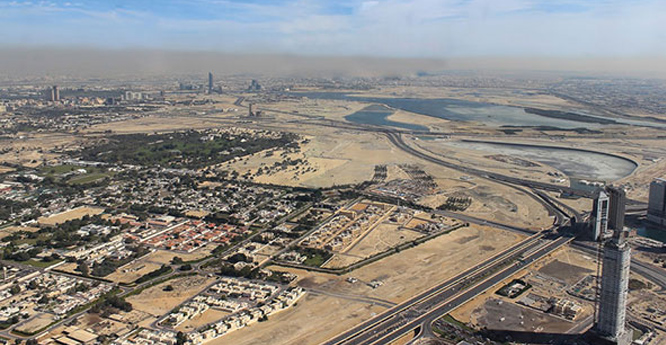Engaging the human process in earth science
Sustainability science research suggests that what elevates environmental problems from difficult to seemingly intractable is the role and behaviour of humans, at scales from individual to institutional.
02/06/2018 By BGS Press
In a recent article in Research Features (issue 125, 2018), I provided a perspective on engaging the human process in earth science. This reflects a long-lived interest, on my part and others’ across the BGS, in the need to engage earth science (particularly earth-surface sciences) in the development of solutions to so-called ‘wicked’ environmental problems.
If you are interested in learning more about the content of the Research Features article, please see the reference list; I’m also happy to send PDFs on papers that are open access. Send a request to our enquiries team.
There are a couple of concurrent activities that you might be interested in. The first is a special session at the annual Fall Meeting of the American Geophysical Union in December 2018, on the human process in Earth’s future. We are examining the human process in the context of wicked environmental problems.
Sustainability science research suggests that what elevates environmental problems from difficult to seemingly intractable is the role and behaviour of humans, at scales from individual to institutional. Our understanding of the human process within the earth science community, however, is largely cloaked in the disciplines of environmental and global-change science. Complementary analyses of the human process, particularly from a behavioural perspective, are available in the disciplines of sociology, social sciences, behavioural economics, psychology, marketing, business, land-use planning, environmental history, deep geography, and others.
Secondly, we are running workshop (funded by the British Council and the Newton Fund) in Hanoi on cascading coupled human-natural hazards. The human process is critical to understanding how natural hazards and possible disasters cascade through a rural-urban environment.

The English countryside, made largely by humans.
These are some other relevant and interesting articles that in one way or another address the role of humans in earth sciences. The papers that are connected to the article in Research Features are highlighted in bold text.
- Armstrong, S B, et al. 2016. Indications of a positive feedback between coastal development and beach nourishment. Earth’s Future, 4(12), 626–635. doi:10.1002/2016EF000425
- Birkmann, J. 2011. First- and second-order adaptation in natural hazards and extreme events in the context of climate change. Natural Hazards, 58, 811–840. doi:10.1007/s11069-011-9806-8
- Bogard, W C. 1988. Bringing social theory to hazards research: conditions and consequences of the mitigation of environmental hazards. Sociological Perspectives, 31, 147–168. doi:10.2307/1389080
- Chapman, A D, et al. 2016. Adaptation and development trade-offs: fluvial sediment deposition and the sustainability of rice-cropping in An Giang Province, Mekong Delta. Climatic Change, 137, 593–608. doi:10.1007/s10584-016-1684-3
- Collonteur, R A, et al. 2015. The failed-levee effect: do societies learn from flood disasters? Natural Hazards, 76, 373–388. doi:10.1007/s11069-014-1496-6
- Criss, R E, and Shock, E L. 2001. Flood enhancement through flood control. Geology, 29, 875–878. doi:10.1130/0091-7613(2001)029<0875:FETFC>2.0.CO;2
- Di Baldassarre, G, et al. 2017. Drought and flood in the Anthropocene: feedback mechanisms in reservoir operation. Earth System Dynamics, 8, 225–233. doi:10.5194/esd-8-225-2017
- Gill, J C, and Malamud, B D. 2014. Reviewing and visualizing the interactions of natural hazards. Reviews of Geophysics, 52, 680–722. doi:10.1002/2013RG000445
- Gill, J C, and Malamud, B D. 2016. Hazard interactions and interaction networks (cascades) within multi-hazard methodologies. Earth System Dynamics, 7, 659–679. doi:10.5194/esd-7-659-2016.
- Gill, J C, and Malamud, B D. 2017. Anthropogenic processes, natural hazards, and interactions in a multi-hazard framework. Earth-Science Reviews, 166, 246–269. doi:10.1016/j.earscirev.2017.01.002
- Haff, P K. 2010. Hillslopes, rivers, plows, and trucks: mass transport on Earth’s surface by natural and technological processes. Earth Surface Processes and Landforms, 35, 1157–1166. doi:10.1002/esp.1902
- Haff, P K. 2012. Technology and human purpose: the problem of solids transport on the Earth’s surface. Earth System Dynamics, 3, 149–156. doi:10.5194/esd-3-149-2012
- Hall, D M, et al. 2014. Strategies for communicating systems models. Environmental Modelling & Software, 55, 70–76. doi:10.1016/j.envsoft.2014.01.007
- Kawasaki, A, et al. 2017. Disaster response and river infrastructure management during the 2015 Myanmar floods: a case in the Bago River Basin. International Journal of Disaster Risk Reduction, 24, 151–159. doi:10.1016/j.ijdrr.2017.06.004
- Kreibich, H, et al. 2017. Adaptation to flood risk: results of international paired flood event studies. Earth’s Future, 5, 953–965. doi:10.1002/2017EF000606
- Lazarus, E D, et al. 2011. Emergent behavior in a coupled economic and coastline model for beach nourishment. Nonlinear Processes in Geophysics, 18(6), 989–999. doi:10.5194/npg-18-989-2011
- Lazarus, E D, et al. 2016. An evolving research agenda for human–coastal systems. Geomorphology, 256, 81–90. doi:10.1016/j.geomorph.2015.07.043
- McNamara, D E, et al. 2011. Coastal sustainability depends on how economic and coastline responses to climate change affect each other. Geophysical Research Letters, 38. doi:10.1029/2011GL047207.
- Pescaroli, G, and Alexander, D. 2015. A definition of cascading disasters and cascading effects: going beyond the ‘toppling dominos’ metaphor. In: Planet@Risk, 2(3): 58–67. (Davos: Global Risk Forum GRF.)
- Peterson, T R. 2015. Integrating social power and political influence into models of social–ecological systems. European Journal of Sustainable Development, 4, 61–76. doi:10.14207/ejsd.2015.v4n2p61
- Van Loon, A F, et al. 2016. Drought in the Anthropocene. Nature Geoscience, 9, 89–91. doi:10.1038/ngeo2646
- Wada, Y, et al. 2017. Human–water interface in hydrological modelling: current status and future directions. Hydrology and Earth System Sciences, 21, 4169–4193. doi:10.5194/hess-21-4169-2017.
- Werner, B T, and McNamara, D E. 2007. Dynamics of coupled human–landscape systems. Geomorphology, 91, 393–407. doi:10.1016/j.geomorph.2007.04.020
See the article in Research Features for more.
Contact
Contact our enquiries team for more information.



